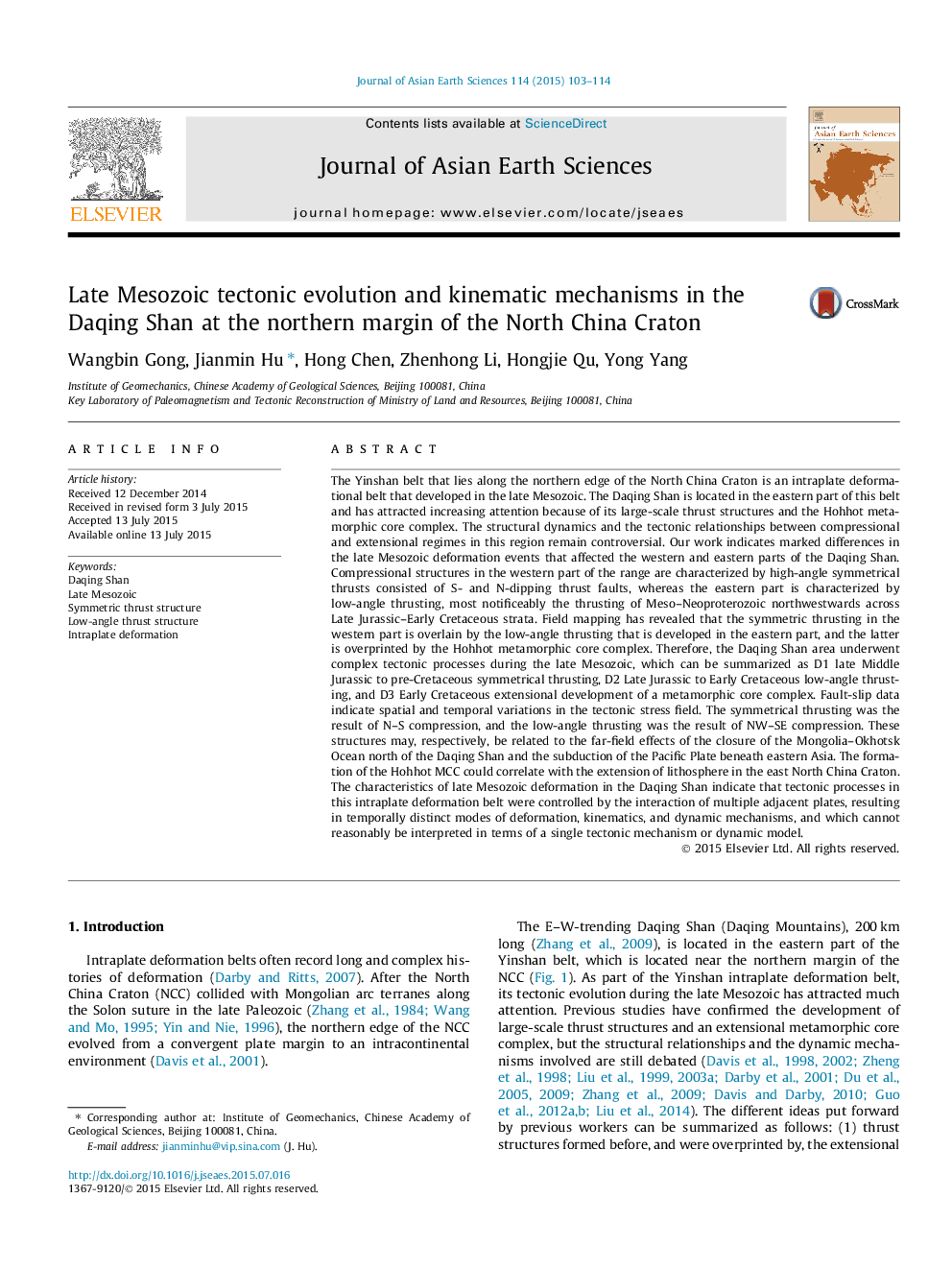| کد مقاله | کد نشریه | سال انتشار | مقاله انگلیسی | نسخه تمام متن |
|---|---|---|---|---|
| 4730119 | 1356737 | 2015 | 12 صفحه PDF | دانلود رایگان |

• Deformation characteristics differ between western and eastern parts of the Daqing Shan.
• The western part underwent late Middle Jurassic to pre-Cretaceous symmetric thrusting.
• The eastern part underwent J3 to K1 low-angle thrusting, overprinted by subsequent extension.
The Yinshan belt that lies along the northern edge of the North China Craton is an intraplate deformational belt that developed in the late Mesozoic. The Daqing Shan is located in the eastern part of this belt and has attracted increasing attention because of its large-scale thrust structures and the Hohhot metamorphic core complex. The structural dynamics and the tectonic relationships between compressional and extensional regimes in this region remain controversial. Our work indicates marked differences in the late Mesozoic deformation events that affected the western and eastern parts of the Daqing Shan. Compressional structures in the western part of the range are characterized by high-angle symmetrical thrusts consisted of S- and N-dipping thrust faults, whereas the eastern part is characterized by low-angle thrusting, most notificeably the thrusting of Meso–Neoproterozoic northwestwards across Late Jurassic–Early Cretaceous strata. Field mapping has revealed that the symmetric thrusting in the western part is overlain by the low-angle thrusting that is developed in the eastern part, and the latter is overprinted by the Hohhot metamorphic core complex. Therefore, the Daqing Shan area underwent complex tectonic processes during the late Mesozoic, which can be summarized as D1 late Middle Jurassic to pre-Cretaceous symmetrical thrusting, D2 Late Jurassic to Early Cretaceous low-angle thrusting, and D3 Early Cretaceous extensional development of a metamorphic core complex. Fault-slip data indicate spatial and temporal variations in the tectonic stress field. The symmetrical thrusting was the result of N–S compression, and the low-angle thrusting was the result of NW–SE compression. These structures may, respectively, be related to the far-field effects of the closure of the Mongolia–Okhotsk Ocean north of the Daqing Shan and the subduction of the Pacific Plate beneath eastern Asia. The formation of the Hohhot MCC could correlate with the extension of lithosphere in the east North China Craton. The characteristics of late Mesozoic deformation in the Daqing Shan indicate that tectonic processes in this intraplate deformation belt were controlled by the interaction of multiple adjacent plates, resulting in temporally distinct modes of deformation, kinematics, and dynamic mechanisms, and which cannot reasonably be interpreted in terms of a single tectonic mechanism or dynamic model.
Journal: Journal of Asian Earth Sciences - Volume 114, Part 1, 15 December 2015, Pages 103–114